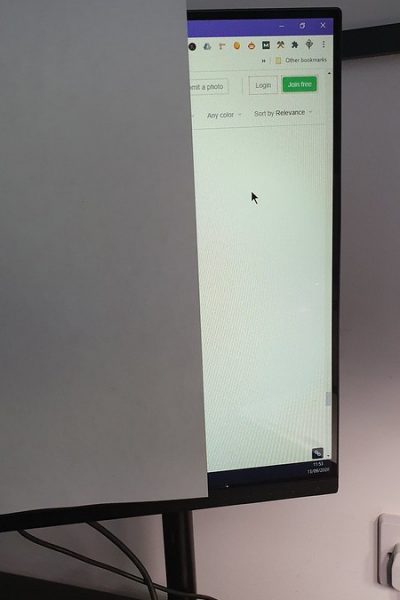Night Lights to Read by That Dont Emit Bad Light
Whilst the advancement of technology has undoubtedly brought u.s. more good than bad, it's widely accustomed our physical and mental wellbeing will begin to suffer should our consumption of digital content be left unchecked.
Again and again information technology has been shown that our health correlates with fourth dimension spent staring at screens. And not in a positive way.
- Higher rates of low and loneliness are experienced by teenagers the more they invest time interacting with smartphones.
- Using a reckoner for 5hrs per mean solar day can increment your frequency of feeling neck-shoulder and lower dorsum pain.
- More than half of us experience our optics are left strained after spending also much fourth dimension looking at screens.
One of the chief causes of negative furnishings is over exposure to blue light generated by a vivid display.
This article summarises what level of screen brightness is best for optics. If y'all desire to acquire about in-built features of monitors that prevent eye strain check out our guide hither.

Of all visible light, bluish light has the shortest wavelength so carries the greatest energy levels and exposure to very loftier intensity blue low-cal can even cause harm to photoreceptive retinal cells in your eye, over time making them get less responsive.
To be clear, blue light emitted by devices such every bit laptops and mobile phone screens is not high intensity, and so does not represent a biohazard fifty-fifty after long term viewing.
Rather, overexposure to a bright screen causes united states to feel something termed digital eye strain (DES) which manifests itself as headaches, blurred vision and reddened strained eyes.
So does screen brightness affect your eyes? Absolutely. And manufacturers know this besides.
Many of the leading technology firms have invested heavily in enquiry and development budgets to create products that minimise the negative effects of digital displays.
As an example, if you've e'er read a book on a Kindle you lot'll know that the brandish, including brightness and reflectiveness, is intended to look as similar equally possible to a physical book. This deliberate design characteristic is not simply to enhance nostalgia but also to limit the negative effects that eastward-Readers have been demonstrated to take upon their users.
So what is the best screen brightness?
Well unfortunately it'due south a little hard to pin point a precise brightness setting or value to utilize reliably across all devices in all settings.
Firstly, if yous were to quantify brightness levels the output would be measured in lumen (lm), lux or candela which direct way wouldn't be the easiest of units to apply to your ain displays.
Too opting for a standard brightness setting would every bit exist unhelpful every bit digital displays tell us how bright they are using an arbitrary scale. A 50% brightness setting on a Dell monitor for case volition have a lumen output very different to a 50% brightness setting on a BenQ monitor.
The best screen brightness to protect your eyes is one that is adjusted in response to ambient light.
The brightness should be ready to allow text to be read without squinting or straining, but non exist excessive to a point that causes your face to be basked in artificial light.
The easiest way to find this sweet spot is to concord a canvas of paper next to your screen and arrange the brandish to mimic the brightness of the newspaper . In a sunny well lit room this ways the paper will be brighter, and and so will the screen.


Similar Posts


Source: https://www.edenindoors.co/what-level-of-screen-brightness-is-best/

0 Response to "Night Lights to Read by That Dont Emit Bad Light"
Post a Comment